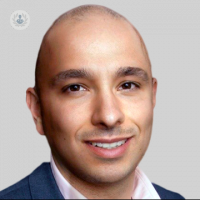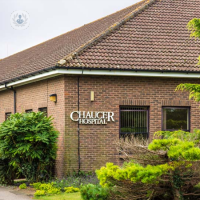The knee joins the thigh to the lower part of the leg, connected by two joints. One is the tibiofemoral joint, between the femur and tibia, while the other is the paletellofemoral joint, between the femur and patella. The knee is the largest of the joints in the human body, but it is also one of the most easily injured.
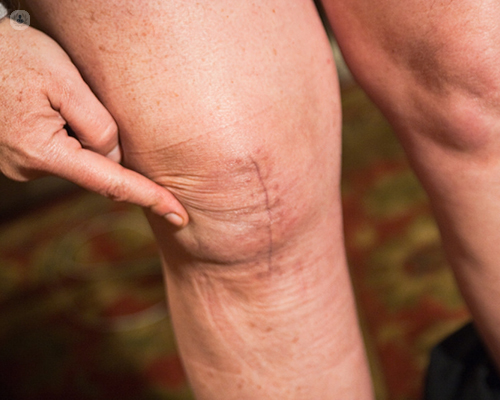
What is the knee made up of?
The knee is made up of bone, ligaments, tendons, and ligaments. They work together to allow the knee to move smoothly and support the body. The knee joint is complex, and therefore it can be injured in a manner of different ways.
Common knee injuries
Some of the more common knee injuries include:
- Fractures
- Ligament injuries (such as anterior or posterior cruciate ligament injuries)
- Tears in tendons or meniscus
- Dislocation
Symptoms of a knee injury
The knee can be injured in many ways, but some of the most common symptoms include pain, especially while walking or moving, a feeling of instability, and swelling in the knee or around it. If you are in severe pain, cannot move your knee, have significant swelling, or cannot walk without limping, you should seek immediate medical attention.
Treatment of knee injuries
Treatment of knee injuries depends on the type of injury and the part of the knee affected. Some knee injuries can be treated through methods like physiotherapy or medication. Some can be treated simply by immobilisation – meaning you cannot move your knee. Usually in these cases a cast or brace will be fitted to ensure protection and help it to heal.
In some cases, surgery may be the best course of treatment. Most surgical procedures these days are minimally invasive, using very small instruments and making minimal incisions, which usually allows for a faster healing process. In some cases, some injuries may need to be treated with open surgery which requires a larger incision.
11-13-2017 11-13-2017Knee
Mr Raghbir Khakha - Orthopaedic surgery
Created on: 11-13-2017
The knee joins the thigh to the lower part of the leg, connected by two joints. One is the tibiofemoral joint, between the femur and tibia, while the other is the paletellofemoral joint, between the femur and patella. The knee is the largest of the joints in the human body, but it is also one of the most easily injured.

What is the knee made up of?
The knee is made up of bone, ligaments, tendons, and ligaments. They work together to allow the knee to move smoothly and support the body. The knee joint is complex, and therefore it can be injured in a manner of different ways.
Common knee injuries
Some of the more common knee injuries include:
- Fractures
- Ligament injuries (such as anterior or posterior cruciate ligament injuries)
- Tears in tendons or meniscus
- Dislocation
Symptoms of a knee injury
The knee can be injured in many ways, but some of the most common symptoms include pain, especially while walking or moving, a feeling of instability, and swelling in the knee or around it. If you are in severe pain, cannot move your knee, have significant swelling, or cannot walk without limping, you should seek immediate medical attention.
Treatment of knee injuries
Treatment of knee injuries depends on the type of injury and the part of the knee affected. Some knee injuries can be treated through methods like physiotherapy or medication. Some can be treated simply by immobilisation – meaning you cannot move your knee. Usually in these cases a cast or brace will be fitted to ensure protection and help it to heal.
In some cases, surgery may be the best course of treatment. Most surgical procedures these days are minimally invasive, using very small instruments and making minimal incisions, which usually allows for a faster healing process. In some cases, some injuries may need to be treated with open surgery which requires a larger incision.


Hoffa’s syndrome – could this be the cause of pain in your knee?
By Mr Charles Willis-Owen
2025-01-02
Do you have pain at the front or the sides of your knee? Has your doctor told you it's nothing to worry about? It could be a case of the often mis-diagnosed Hoffa's syndrome. Leading consultant orthopaedic surgeon, Mr Charles Willis-Owen explains all about this condition. See more
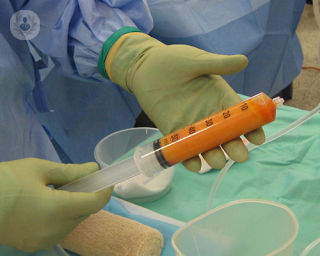

Intra-articular injections for managing knee osteoarthritis
By Professor Paul Lee
2025-01-02
Knee pain is a common ailment and source of discomfort for the UK’s population, related to the obesity epidemic, our ageing population and our increasingly sedentary lifestyles. Knee pain is often attributed to osteoarthritis, with eventual treatment being a total knee replacement (TKR). However, due to low levels of patient satisfaction with this procedure, as well as poor outcomes, leading orthopaedic surgeons like Professor Paul Lee are turning to intra-articular injections to provide their patients with temporary pain relief. See more


What kind of knee pain is caused without injury?
By Mr Trevor Lawrence
2025-01-02
Here, Mr Trevor Lawrence, a highly experienced consultant orthopaedic surgeon, details the different types of knee pain, and what kind of knee pain is usually caused without injury or trauma to the knee. See more
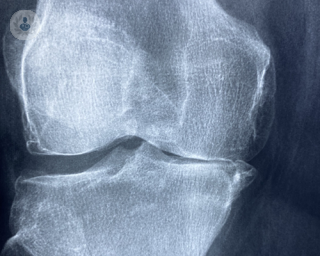

How successful is knee surgery for arthritis?
By Mr Yuvraj Agrawal
2025-01-02
Knee surgery, particularly knee replacement surgery, is often considered a highly effective treatment for arthritis, especially for individuals who have not found relief through non-surgical treatments like medication, physiotherapy, or lifestyle changes. The surgery is primarily aimed at reducing pain, restoring mobility, and improving quality of life for patients with severe arthritis in the knee. See more
Experts in Knee
-
Mr Andrew Davies
Orthopaedic surgeryExpert in:
- Sports injuries
- Knee
- Knee replacement
- Ligamentoplasty
- Knee arthroscopy
- Anterior cruciate ligament
-
Mr Neil Jain
Orthopaedic surgeryExpert in:
- Knee
- Shoulder
- Sports injuries
- Tendon injuries
- Joint preservation surgery
- Sports surgery
-
Mr Raghbir Khakha
Orthopaedic surgeryExpert in:
- Sports injuries
- Joint preservation surgery
- Joint replacement
- Knee
- Paediatric orthopaedics
- Osteotomy
-
Mr Chukwuemeka Nnene
Orthopaedic surgeryExpert in:
- Hip replacement
- Foot and ankle
- Knee replacement
- Knee
- Knee arthroscopy
- Arthroplasty
-
Mr Yousufuddin Shaik
Orthopaedic surgeryExpert in:
- Achilles tendon
- Bunion (hallux valgus)
- Joint pain
- Knee
- Stem cells
- Foot and ankle
- See all

The Chaucer Hospital - part of Circle Health Group
The Chaucer Hospital - part of Circle Health Group
Nackington Rd, Canterbury CT4 7AR,
No existe teléfono en el centro.
By using the telephone number provided by TOP DOCTORS, you automatically agree to let us use your phone number for statistical and commercial purposes. For further information, read our Privacy Policy
Top Doctors

New Victoria Hospital
New Victoria Hospital
184 Coombe Lane West, Kingston upon Thames, KT2 7EG
No existe teléfono en el centro.
By using the telephone number provided by TOP DOCTORS, you automatically agree to let us use your phone number for statistical and commercial purposes. For further information, read our Privacy Policy
Top Doctors

Cleveland Clinic Moorgate Outpatient Centre
Cleveland Clinic Moorgate Outpatient Centre
55 Moorgate, EC2R 6BH
No existe teléfono en el centro.
By using the telephone number provided by TOP DOCTORS, you automatically agree to let us use your phone number for statistical and commercial purposes. For further information, read our Privacy Policy
Top Doctors
-
The Chaucer Hospital - part of Circle Health Group
Nackington Rd, Canterbury CT4 7AR,, CanterburyExpert in:
- Hip
- Cataracts
- Orthopaedic surgery
- Ophthalmology
- Knee
-
New Victoria Hospital
184 Coombe Lane West, Kingston upon Thames, KT2 7EG, South LondonExpert in:
- Cardiology
- General Surgery
- Orthopaedic surgery
- Breast augmentation
- Pain management
- Spine
-
Cleveland Clinic Moorgate Outpatient Centre
55 Moorgate, EC2R 6BH, Central LondonExpert in:
- Digestive
- Cardiology
- Dermatology
- Diagnostic Imaging
- Diagnostics
- Obstetrics and Gynaecology
- See all
- Most viewed diseases, medical tests, and treatments
- Ulnar nerve entrapment
- Peripheral nerve block
- Peripheral neuropathy
- Joint pain
- Lumbar herniated disc
- Spinal surgery
- Minimal access surgery (keyhole surgery)
- Shoulder pain
- Osteoporosis
- Botulinum toxin (Botox™)


